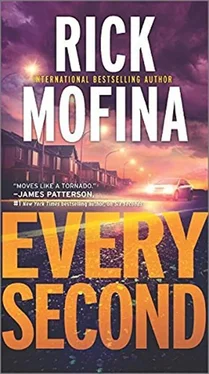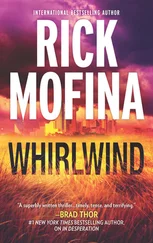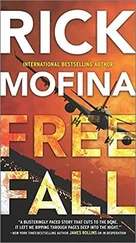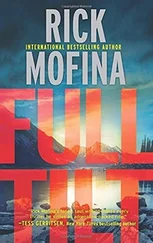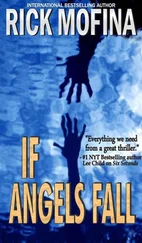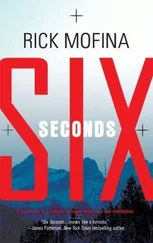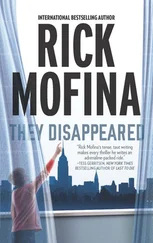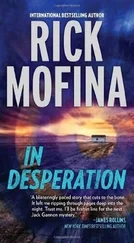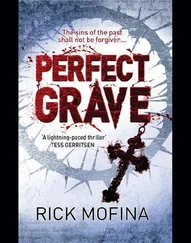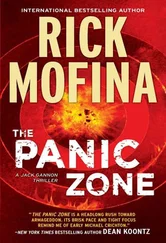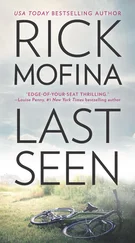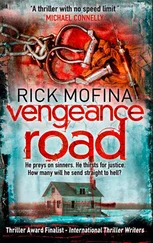“And what exactly has you disturbed?”
“He owns Bazerinni Trucking and it’s the loan he’s taken out that concerns me-an eight-hundred-thousand-dollar business loan.”
“What about it?” Tilden asked.
McGarridge hesitated, then rubbed his lips.
“About five or six months ago his son, Luca Bazerinni, a vice president of the company, stormed into the branch, claiming we’d misled Bazerinni Trucking on the terms of the loan.”
“Was that the case?” Varner asked.
“Absolutely not. Mr. Bazerinni and his family had misunderstood the terms of the loan.”
“How’s this relevant to what’s happening now?” Tilden asked.
“Bazerinni Trucking was losing income. Several business accounts were consistently overdrawn. They were having difficulties with suppliers and subcontractors. They wanted loan modifications. In fact, they said they’d been guaranteed a loan modification, which was absolutely not the case for the type of loan and interest rates they’d secured. The terms were very strict for that type of loan.”
“So, what happened?” Tilden asked.
“We explained this to Luca Bazerinni and he got very upset.”
“Upset how?” Tilden asked.
“He threatened the bank.”
“With what?”
“When he left I remember exactly what he said. It was, ‘Do you know who you’re talking to? You mothers better watch your back, ’cause one day you’re gonna regret this!’”
Tilden and Varner exchanged looks.
“Was Dan Fulton party to this?”
“No, Dan never knew. I was handling this with Martin Green, a junior loan officer, who’s since moved to Seattle.”
“Why didn’t you tell Dan?”
McGarridge blinked several times and stared off.
“Mr. McGarridge, that’s a serious threat you received. Why didn’t you report it?”
McGarridge pulled off his glasses and rubbed his eyes. “I was Martin’s supervisor. I knew Martin had a penchant for ‘overselling’ the loan terms, implying the bank could, or would, do better than what was on paper, and I’d cautioned him many times on that. There are regulations and laws. But in this case, I’d convinced myself that this was just a matter of Luca Bazerinni blowing off steam because the company was losing money.”
Tilden and Varner let a moment pass. They knew there was more.
“What’s the truth, here?” Tilden asked.
McGarridge’s hands started shaking.
“Nothing happened after that with Bazerinni, so I thought everything was okay. All water under the bridge.” His chin trembled. “But the truth? The truth was I was due to be reviewed for a bonus, and this case would’ve ruined that. And now-now after what’s happened… If Dan and his family are… This could all be my fault! I’m-they’ve got a nine-year-old son… Please, you have to find them! Please.”
Jamaica, Queens, New York
Meredith DeSalvo had braced for what was coming.
Wearing a lab coat, white latex gloves and a hair and face covering, she was hunched over her microscope in the Latent Print Development Unit of the NYPD crime lab.
The lab was in a drab, five-story complex that was once part of the City University of New York. Meredith, a Level 2 criminalist with the unit, was setting aside her analysis on a cold rape case, clearing her workload.
Earlier that morning she’d been alerted to an ongoing hostage-abduction situation involving a bank manager and his family. Meredith was assigned to lead the small team that would process the evidence for prints. The material would also be examined by the hair-and-fiber unit.
This case was the NYPD’s top priority-beyond urgent.
Investigators needed evidence to point them to the people behind the crime and they needed it now.
“Heads up, here it is,” said Rita Chow, Meredith’s manager.
Rita was accompanied by two Crime Scene Unit detectives carrying several brown paper bags containing evidence collected from Dan and Lori Fulton’s home. They’d placed the bags on Meredith’s workbench. After everyone signed off on chain-of-evidence documentation, Meredith and the other criminalists in the unit began processing the material. If a suspect had left something behind at the scene, Meredith’s team would find it.
They opened the bags and logged and recorded the items inside, which included towels, swatches collected from sofa cushions, armrests, soda cans, pizza boxes, used napkins, used forks, spoons, knives, balled-up duct tape, crystal figurines and take-out containers for Chinese food.
Meredith and her team began by making visual inspections of the items under high-powered magnifying lamps.
They searched for patent prints, those that are visible when fingers touch a clean surface after they’d been contaminated with substances like blood, dirt, ink, paint, grease, powders or oils.
Next, they collected possible DNA by using moistened cotton swabs to rub the items over the areas where the suspect would have touched them, particularly around the lid of soda cans. The swabs were documented and shipped immediately to the Office of the Chief Medical Examiner for DNA analysis.
The criminalists then switched off the lab’s lights to examine the material under ultraviolet and infrared lights for naturally fluorescent prints.
Once that was done, they moved into a process known as superglue fuming. They placed items in the chamber with a volume of superglue, watching as the fumes that vaporized from the glue adhered to residue left from the prints, leaving a white coating that could be photographed.
After twenty minutes they used a plastic bottle of fluorescent water-based dye and submerged the evidence with it. Then let it dry for another twenty minutes.
Meredith was pleased.
So far her team had collected a number of clear prints.
But her highest hope was with the duct tape.
She knew the probability of getting usable prints from the tape was high, since criminals often bound their victims with it. She also knew that in most cases the tape was impossible to manipulate while wearing gloves. At some point, a suspect would leave a print-either on the smooth side or the sticky side.
The challenge was in unbinding the tape so as not to damage any prints captured on it. First, a liquid release agent was applied where two pieces of tape met. Meredith and a coworker did this stage together, using tweezers to separate the tape sections while generously applying the release agent. Once that was done, they flattened the salvaged pieces.
It used to require twenty-four hours before they could move on to the next stage, but scientists in Japan had developed a new, rapid adhesive-side developer to apply to the sticky side of the duct tape. After letting it dry for several minutes, they rinsed off the powder, and prints emerged.
“Fantastic,” Meredith said.
She photographed them, protected them with clear tape. Then she viewed them on her computer monitor, along with the other prints her team had collected. After entering all the appropriate evidentiary data, Meredith submitted the prints with a few clicks to fingerprint detectives, who were standing by at One Police Plaza to identify them.
Staring hard at the images on her screen, Meredith was convinced.
One of these has to belong to a suspect.
New York City
“It’s always something in this town.”
Kate couldn’t tell if her taxicab driver-Nazir, according to the license displayed over the back of the front seat-was complaining to her or himself.
The cab had come to a gently sloping segment of the Long Island Expressway where westbound traffic had slowed near the Midtown Tunnel.
“See?” Exasperated, Nazir lifted his hands from the wheel. “It’s backed up more than normal. It’s always something.”
Читать дальше
Конец ознакомительного отрывка
Купить книгу
